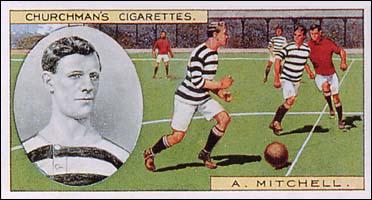 Here are local ball boys, hired by Yeovil Town for their National League match against Bromley at Huish Park, on Saturday. Usually it's a local junior club (or the club's juniors) that has the privilege of being ball boys/girls, a wonderful moment in the young persons' life.
Here are local ball boys, hired by Yeovil Town for their National League match against Bromley at Huish Park, on Saturday. Usually it's a local junior club (or the club's juniors) that has the privilege of being ball boys/girls, a wonderful moment in the young persons' life.The club motto is "Achieve by Unity" and the lads have made the news and followed that motto when they were all "sent off" with a few minutes to go and showed 8 red cards by referee Aaron Jackson, when he decided that they were obstructing the game by wasting time getting the ball back. One boy delayed handling the ball to an opponent and then a mate copied him! The ref stepped in!
This was put on Twitter immediately by a supporter and it got 20,000 hits! The ref had to retrieve the ball himself.
https://video.search.yahoo.com/yhs/search?fr=yhs-pty-pty_extension&hsimp=yhs-pty_extension&hspart=pty&p=Yeovil+ball+boys#id=1&vid=3e2b1491ab7645e07a598a7775d7ca63&action=click
The Glovers were leading 3-1 with not long to go, when the mass sending off happened. Bromley goalkeeper, Mark Cussins, was carried off with an injury, delaying the game for 18 minutes, so what with the usual added time and the ball boys mucking about the ref was clearly going to miss his train home. he got grumpy. BBC Somerset reporter Chris Spittles kept local listeners well informed.
Founded in 1895 as Yeovil Casuals, the club nickname is the Glovers following the local industry, centred on the town.
In the late 1940s the club merged with local Petters United and hence the club name changed to Yeovil Town in 1946-7. They now played in the National League being relegated from League 2 last season. Prior to that, they were in the Championship in 2013-14, League 1 in 2005-6 and Division 3 in 2003-4.
 He'll frighten the life out of your children.
He'll frighten the life out of your children.




 Dundalk FC carries the martlets too, dating from the town's medieval history. Martlets also may be found on crests at Worcester College Oxford, Pembroke Coll, Cambridge, Bromsgrove School and Mill Hill School, to name a few.
Dundalk FC carries the martlets too, dating from the town's medieval history. Martlets also may be found on crests at Worcester College Oxford, Pembroke Coll, Cambridge, Bromsgrove School and Mill Hill School, to name a few.



 The new Wembley 2007.
The new Wembley 2007.







 This is the original Roy Race, of Melchester Rovers in one of the club's characteristic strips. Roy appeared as a comic strip first in 1954, on September 11th. Then there was a weekly comic devoted to just Roy and his story from 25th September 1976 until 1993 and he has appeared in various forms including a serialised strip in the Today newspaper. Various annuals are published too, along with various other incarnations in, monthly comics, publishing old stories. In 1993 strips in Shoot magazine told stories about another footballer, "Ray" and in July 1997 he is resurrected in the "Match of the Day" magazine through to 2001.
This is the original Roy Race, of Melchester Rovers in one of the club's characteristic strips. Roy appeared as a comic strip first in 1954, on September 11th. Then there was a weekly comic devoted to just Roy and his story from 25th September 1976 until 1993 and he has appeared in various forms including a serialised strip in the Today newspaper. Various annuals are published too, along with various other incarnations in, monthly comics, publishing old stories. In 1993 strips in Shoot magazine told stories about another footballer, "Ray" and in July 1997 he is resurrected in the "Match of the Day" magazine through to 2001. Include a terrorist attack in "Basran", club bankruptcy, Rovers in the second division, Roy as a manager in AC Monza in Italy, a car crash when his wife was killed and so on, an exhibition of Roy's life is being shown in the National Football Museum, Manchester.
Include a terrorist attack in "Basran", club bankruptcy, Rovers in the second division, Roy as a manager in AC Monza in Italy, a car crash when his wife was killed and so on, an exhibition of Roy's life is being shown in the National Football Museum, Manchester.
 An excursion into Cambridgeshire yesterday brought back a few memories and taking a brisk walk from the Holiday Inn at Histon and Impington, I followed the floodlights, finding myself at an industrial yard and on the new guided bus route which seemed to be obsolete.
An excursion into Cambridgeshire yesterday brought back a few memories and taking a brisk walk from the Holiday Inn at Histon and Impington, I followed the floodlights, finding myself at an industrial yard and on the new guided bus route which seemed to be obsolete.


 With England and Harry Kane especially, trouncing Bulgaria's national team yesterday, it leads me to tell you a bit about the Bulgarian Football Association.
With England and Harry Kane especially, trouncing Bulgaria's national team yesterday, it leads me to tell you a bit about the Bulgarian Football Association.